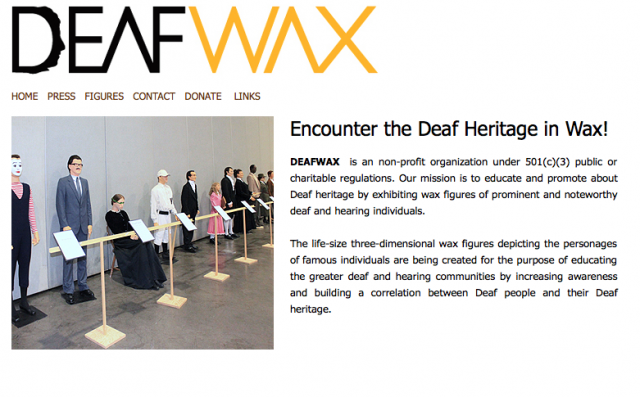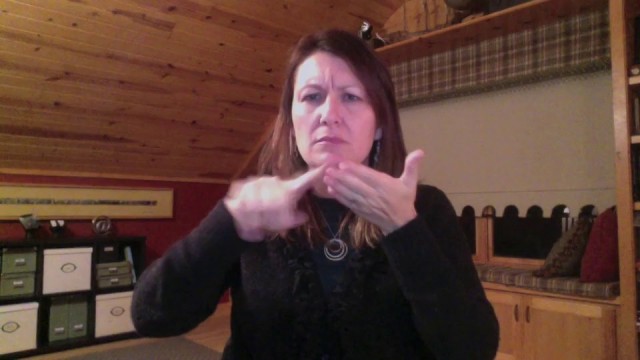Originally appeared in Silent News, February 2002.
There’s been a lot of publicity surrounding deaf prisoners within the past few years, including Joseph Heard, who was wrongly jailed for 22 months in a Washington, D.C. jail. Often deaf inmates are forced to deal with officers and other prisoners who do not understand deafness, prison systems that do not provide interpreters or accommodations, and cultural differences between hearing and deaf inmates.
Katrina Miller, originally from Kansas and currently working at the University of Arkansas Rehabilitation Research and Training Center for Persons who are Deaf or Hard of Hearing in Little Rock, recently earned her doctorate in deaf studies/deaf education. What makes her doctorate unique is that Miller chose to focus specifically on deaf inmates in the Texas state prison system – which is remarkable, considering that research on deaf inmates is sparse. She studied 97 deaf offenders serving time at a Huntsville prison.
“I looked at three areas pertaining to deaf prisoners [in Texas prisons]. Demographics, offenses, and accommodations provided,” explains Miller, who has a deaf sister. However, before she could actually study the population, she had to first go through a long process of being approved by several review boards.
When studying demographics, Miller discovered that most were similar between hearing and deaf offenders – sex, race, age, and IQ – but educational achievements differed greatly. “The average educational achievement of deaf offenders was third grade, but it was seventh grade for the remaining population,” Miller says.
In Texas, which possibly has the largest population of deaf inmates in the country, deaf inmates are grouped together at a specific facility. Miller feels this is a good practice. “I think grouping is an excellent strategy. Deaf people from rural areas or with communication isolation can be socialized to some extent in prison.” Miller also adds that prisons may become more supportive of hiring interpreters if there are more deaf people together in one location, making interpreting services cost-effective.
“I think it is healthier for deaf prisoners to be with people they can talk to,” she says. “It’s also safer for them physically, because deaf prisoners would make easy prey for others who would take advantage of them.” The drawbacks are that due to cultural differences, deaf prisoners are more likely to freely share information, which may create problems and give them unfair reputations for being “snitches” among hearing inmates.
Miller’s research also included talking with prisoners and learning about their experiences, backgrounds, and communication styles. The population at Huntsville has a full-time interpreter on staff and replacement interpreters as necessary, in addition to one television with closed captioning, TTYs upon request, and vibrating alarms. However, each inmate also has an identification card that states that he is deaf so they will not be disciplined for ignoring officers or not responding to directives they didn’t hear.
“One man said that he had been put into a different facility because he used voice during his intake and [officials] would not believe he was deaf. It took him four months and his parents’ intervention to get over to the Physically Handicapped Offender Program environment,” Miller recounts.
Another area explored is the use of language. Miller chose to categorize the deaf inmates by oral, signing, and minimal language or language disorders. She learned that many of the inmates adapted their sign language to the prison environment. “For instance, a sign typically used for ILLEGAL was often used to describe CONTRABAND in the prison setting. It made perfect sense. There were also signs that I’d never seen, some of which were devised to describe the prison setting or were iconic gestures between hearing and deaf people that had become part of the language,” Miller says.
Other signs were simply old Texas School for the Deaf signs that are rarely seen today, such as the old sign for PUNISH that evolved to mean PRISON or HUNTSVILLE. This evolution of signs is common among deaf inmates, such as these at the Eastern Correctional Facility in Napanoch, N.Y., where the sign for INMATE is formed by pinching the inmate’s pants and shaking the cloth. Eastern has approximately 20 deaf inmates grouped together; Pennsylvania has 20 and Georgia 10, according to Miller, who was unable to get numbers for California.
Miller earned her bachelor’s degree from the University of Alaska, Anchorage, in sociology in 1993, and master’s degree in rehabilitation counseling with the deaf from Western Oregon University in 1996. She is one of Lamar’s star graduates, according to Jean Andrews, Regents’ Professor of Deaf Studies. “She is not only one of our most prolific doctoral students in terms of professional writing, she is also a pioneer in her area of forensic studies.”
Miller has turned her research into a book, Deaf Culture Behind Bars: Signs and Stories of a Texas Population, due to be published and released by AGO Publications this summer. The book also provides a history, signs that may be unique to correctional populations, and tips for communicating with deaf prisoners.
“It’s my hope that it will lead to more of what I like to call ‘access studies’ in the prisons, which are studies and recommendations advocating for the accommodation of deaf inmates,” Miller says.
While at the University of Arkansas, she will research the use of job coaching and job support for deaf people with minimal language skills and multiple disabilities, in addition to advocating for legal rights primarily by publishing in legal journals. She credits many people for her success, namely Lamar University advisor Dr. Tony Martin, and Dr. McCay Vernon, a renowned researcher and psychologist.
“In addition, the information from this study will be used to help professionals in the field of corrections to understand and develop sensitivity to the unique barriers and cultural issues that deaf inmates face in the prison environment. I think Texas can provide a leadership role in sharing about the program they have developed with other states.”
Copyrighted material. This article can not be copied, reproduced, or redistributed without the written consent of the author.


